ANIMALS
27 Odd Animals That We Actually Think Are Really Cute
Published
12 months agoon
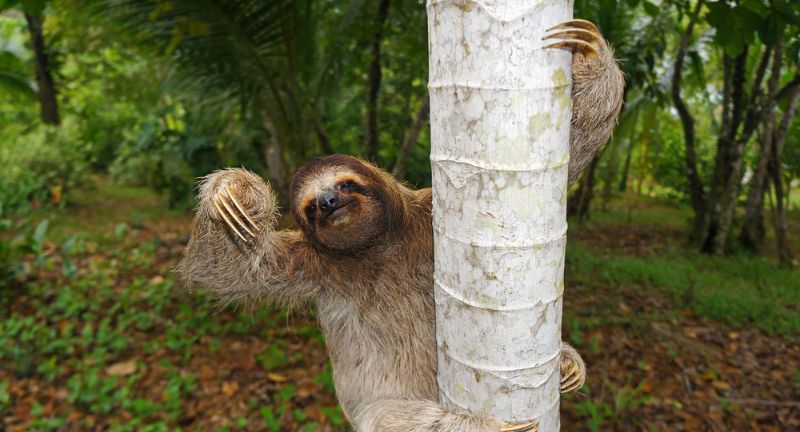
Shutterstock
Exploring the diversity of the animal kingdom reveals a wide array of creatures, some of which might initially strike us as peculiar or even unattractive. However, beneath the surface of their unconventional appearances lies a world of fascinating adaptations, behaviors, and ecological roles. From the depths of the ocean to the treetops of tropical forests, these animals demonstrate the beauty of evolutionary innovation and the complexity of life on Earth. Despite being labeled as ‘ugly’ by some, many of these creatures possess unique charm and serve crucial functions in their respective ecosystems. Let’s delve into the intriguing world of animals that challenge our perceptions of beauty and showcase the wonders of nature.
Aye-aye

Shutterstock
The Aye-aye, native to Madagascar, is a peculiar-looking primate with large, round eyes, bat-like ears, and long, skeletal fingers. Despite its somewhat unsettling appearance, the Aye-aye plays a crucial role in its ecosystem as a nocturnal hunter, using its specialized finger to extract insects from tree bark. Their unique features make them both fascinating and endearing creatures, admired by many for their distinctive characteristics.
Naked mole rat

Shutterstock
Naked mole rats may not win any beauty contests with their hairless, wrinkled appearance, but these small rodents have some remarkable traits. They live in underground colonies and are highly adapted to their subterranean lifestyle, with large teeth used for digging and a lack of pain sensation in their skin. Despite their unusual looks, naked mole rats are social creatures with complex societies and are even being studied for their potential longevity and resistance to cancer.
Potoo Bird

Shutterstock
Potoo birds are nocturnal birds found in Central and South America, known for their large eyes and cryptic plumage. While their appearance might be unsettling to some, potoo birds are skilled hunters that prey on insects and small vertebrates under the cover of darkness. Despite their somewhat eerie appearance, potoo birds are fascinating creatures with unique adaptations for life in dense rainforests, where they blend seamlessly into their surroundings.
Blobfish

Shutterstock
The blobfish, often portrayed as a gelatinous mass out of water, inhabits the deep waters off the coasts of Australia and New Zealand. Its peculiar appearance is due to its gelatinous flesh, which allows it to maintain buoyancy in its deep-sea habitat. Despite its unappealing appearance on land, the blobfish is perfectly adapted to its environment and serves an important role in the deep-sea ecosystem.
Proboscis monkey

Shutterstock
The proboscis monkey, found in Borneo, is known for its distinctive large, fleshy nose that hangs over its mouth. While this feature may not be conventionally attractive, it serves important purposes such as amplifying vocalizations and attracting mates. Despite its unusual appearance, the proboscis monkey is an adept swimmer and spends much of its time near water, where it forages for food and socializes with other members of its troop.
Axolotl

Shutterstock
The axolotl, also known as the Mexican walking fish, is a fascinating amphibian with a unique appearance. Despite its unusual external gills and perpetual smile, axolotls have captured the hearts of many as popular pets and subjects of scientific study. Native to the ancient lake complex of Xochimilco near Mexico City, axolotls have remarkable regenerative abilities, being able to regrow lost limbs and even parts of their brains.
Hagfish

Shutterstock
Hagfish, often referred to as “slime eels,” are primitive marine creatures with elongated, eel-like bodies and distinctive slime-producing glands. While their appearance and slime production might be off-putting to some, hagfish play an essential role in marine ecosystems as scavengers and help maintain oceanic health. Their ability to produce copious amounts of slime serves as a defense mechanism against predators, allowing them to escape from potential threats.
Marabou Stork

Shutterstock
The Marabou stork, with its bald head, scraggly neck feathers, and massive bill, might not be considered conventionally attractive, but it is an impressive bird nonetheless. Found in various parts of Africa, these large storks play a vital role in ecosystems as scavengers, feeding on carrion and waste. Despite their somewhat unsettling appearance, Marabou storks are fascinating creatures with unique behaviors and adaptations for survival in their habitats.
Shoebill

Shutterstock
The Shoebill, also known as the “whalehead” or “shoe-billed stork,” is a large bird with a distinctive shoe-shaped bill. Found in the swamps of East-Central Africa, these birds have a prehistoric appearance that might be considered ugly by some, but they are incredibly skilled hunters. Despite their formidable appearance, shoebills have a slow, deliberate manner, often standing motionless for long periods before striking at prey with lightning-fast speed.
Star-nosed Mole

Shutterstock
The star-nosed mole is a small mammal found in wet lowland areas of eastern North America. Its most distinctive feature is the star-shaped arrangement of 22 fleshy appendages on its nose, which it uses to detect prey through touch. While its unusual appearance might not be conventionally attractive, the star-nosed mole is a highly efficient predator, capable of locating and consuming small invertebrates at remarkable speeds.
Saiga Antelope

Shutterstock
The Saiga antelope, with its bulbous nose and large, downturned horns, is a unique-looking inhabitant of the Eurasian steppes. While its appearance may seem odd to some, the Saiga antelope is well-adapted to its harsh environment. Unfortunately, these distinctive features have made the Saiga antelope a target for poachers, leading to a significant decline in their populations in recent years.
Tasmanian Devil

Shutterstock
The Tasmanian devil, the largest carnivorous marsupial in the world, is known for its stocky build, black fur, and powerful jaws. While its appearance might be intimidating, Tasmanian devils are essential to their ecosystem as scavengers, helping to clean up carrion. Despite facing threats such as habitat loss and a contagious facial cancer, efforts are underway to conserve and protect these iconic creatures.
Vulture

Shutterstock
Vultures, with their bald heads and hunched posture, might not be conventionally attractive, but they play a crucial role in ecosystems as scavengers. Found on every continent except Antarctica, vultures help prevent the spread of disease by consuming carrion that would otherwise rot and harbor pathogens. Despite their somewhat sinister appearance, vultures are vital to maintaining healthy ecosystems and are deserving of appreciation and protection.
Warthog

Shutterstock
Warthogs, with their warty faces and large tusks, might not be considered conventionally cute, but they are fascinating creatures nonetheless. Found in sub-Saharan Africa, warthogs are highly adaptable and can thrive in a variety of habitats, from savannas to woodlands. Despite their somewhat rugged appearance, warthogs are social animals that live in groups called sounders, consisting of females and their offspring.
Gila Monster

Shutterstock
The Gila monster, native to the southwestern United States and northwestern Mexico, is one of only two venomous lizard species in North America. While its venomous bite might make it intimidating to some, the Gila monster is a slow-moving reptile that primarily feeds on eggs, small mammals, birds, and reptiles. Despite its fearsome reputation, the Gila monster is a valuable part of its ecosystem and is protected in many areas to ensure its survival.
Japanese Spider Crab

Shutterstock
The Japanese spider crab is a species of marine crab found in the waters around Japan. It is known for its exceptionally long legs, which can span up to 12 feet from claw to claw, making it the largest arthropod in the world. Despite its intimidating appearance, the Japanese spider crab is relatively harmless to humans and primarily feeds on shellfish and other small marine organisms.
Armadillo

Shutterstock
The armadillo, with its unique armored shell and distinctively armored appearance, is a fascinating mammal native to the Americas. Despite its somewhat rugged exterior, the armadillo possesses remarkable adaptations for survival, including the ability to roll into a ball when threatened. Found in a variety of habitats ranging from grasslands to forests, armadillos play important ecological roles as insectivores and seed dispersers. Despite facing threats such as habitat loss and vehicle collisions, armadillos continue to thrive in many regions, showcasing their resilience in the face of environmental challenges.
Tarsier

Shutterstock
The Tarsier is a small primate found in Southeast Asia, known for its large eyes and elongated fingers and toes. While its oversized eyes might give it a somewhat eerie appearance, the Tarsier’s unique features serve important purposes in its nocturnal lifestyle. Despite its small size, the Tarsier is an efficient hunter, using its exceptional night vision and sensitive hearing to locate prey such as insects and small vertebrates.
Sunda Colugo (Sunda Flying Lemur)

Shutterstock
The Sunda colugo, also known as the Sunda flying lemur, is a gliding mammal found in Southeast Asia. Despite its name, the Sunda colugo is not a lemur and is more closely related to primates like monkeys and apes. While its appearance might be unconventional, the Sunda colugo’s ability to glide effortlessly through the forest canopy is a sight to behold, showcasing the wonders of evolution and adaptation.
Horseshoe Crab

Shutterstock
Horseshoe crabs have remained relatively unchanged for hundreds of millions of years, earning them the title of “living fossils.” While their appearance might be prehistoric and somewhat intimidating, horseshoe crabs are fascinating creatures with unique adaptations. Despite their name, horseshoe crabs are more closely related to spiders and scorpions than true crabs, and they play a vital role in marine ecosystems as scavengers and prey for various species.
Platypus

Shutterstock
The platypus, with its unique combination of features such as a duck-like bill, webbed feet, and beaver-like tail, is one of the most peculiar mammals found in Australia. Despite its somewhat bizarre appearance, the platypus is a highly specialized semi-aquatic creature, primarily inhabiting freshwater streams and rivers. Known for its ability to detect prey through electroreception, the platypus forages for aquatic invertebrates and small fish. Unfortunately, habitat destruction, pollution, and climate change threaten the survival of this iconic monotreme, highlighting the urgent need for conservation efforts to protect its freshwater habitats.
Turkey Vulture

Shutterstock
Turkey vultures, with their bald heads and dark plumage, might not be considered conventionally beautiful, but they are essential members of ecosystems across the Americas. These large scavenging birds play a crucial role in cleaning up carrion and preventing the spread of disease. Despite their somewhat sinister appearance and feeding habits, turkey vultures are fascinating creatures with unique adaptations for soaring effortlessly through the sky in search of food.
Mole

Shutterstock
Moles are small mammals found in various habitats across the globe, known for their cylindrical bodies, velvety fur, and powerful digging claws. While their subterranean lifestyle might keep them out of sight for most people, moles play a crucial role in soil health and aerating the earth. Despite their somewhat unconventional appearance, moles are fascinating creatures with specialized adaptations for life underground.
Glass Frog

Shutterstock
Glass frogs are a group of amphibians found in Central and South America, known for their translucent skin that reveals their internal organs. While their appearance might be unusual, glass frogs are captivating creatures with unique adaptations for life in tropical rainforests. Despite their delicate appearance, glass frogs are skilled hunters, feeding on insects and other small invertebrates in their forest habitats.
Komondor Dog

Shutterstock
The Komondor dog is a large Hungarian breed known for its distinctive corded coat, which resembles dreadlocks. While its appearance might be unconventional for a dog, the Komondor is a loyal and protective companion with a long history of guarding livestock. Despite their unique grooming requirements, Komondors are affectionate and devoted pets that excel in roles such as therapy dogs and loyal family companions.
Patagonian Mara

Shutterstock
The Patagonian Mara, also known as the Patagonian cavy or the Patagonian hare, is a large rodent found in parts of Argentina and Chile. While its appearance might be reminiscent of a mix between a rabbit and a deer, the Patagonian Mara is neither, belonging to the rodent family. Despite its somewhat unusual appearance, the Patagonian Mara is a fascinating creature with unique behaviors and adaptations for life in the grasslands of South America.
Sloth

Shutterstock
The sloth, with its slow-moving and arboreal lifestyle, is an iconic resident of the rainforests of Central and South America. Despite their seemingly lazy demeanor, sloths play crucial roles in their ecosystems as seed dispersers and hosts for algae and insects. With their unique adaptations for life in the treetops, including long claws and specialized digestive systems, sloths are well-suited to their canopy habitat. However, habitat loss and fragmentation pose significant threats to sloth populations, emphasizing the importance of protecting their forest homes for the conservation of these beloved creatures.
Conclusion

Shutterstock
As we conclude our journey through the world of ‘ugly’ animals, it becomes evident that beauty truly lies in the eye of the beholder. While these creatures may not conform to traditional standards of attractiveness, they captivate us with their unique features, behaviors, and ecological significance. Our exploration highlights the importance of looking beyond superficial appearances and appreciating the diversity and complexity of life on our planet. Every species, regardless of its outward appearance, plays a vital role in maintaining the balance of ecosystems and enriching our understanding of the natural world. Let us continue to celebrate and protect these fascinating creatures for generations to come.
More Amazing Animals+
-
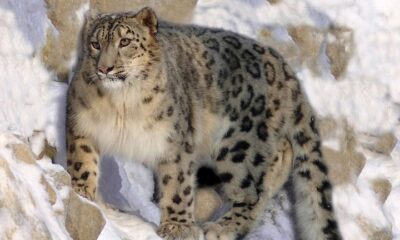

30 Toughest Animals That Will Do Anything To Survive
-
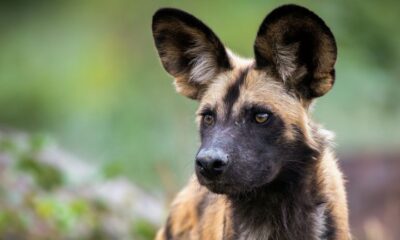

21 Animals That Are Considered Stone Cold Killers
-


Otterly Adorable: 23 Reasons Why Otters Are More Than Just…
-
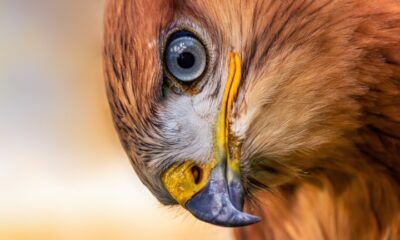

Hawk Yeah! 26 Facts About The Best Birds
-
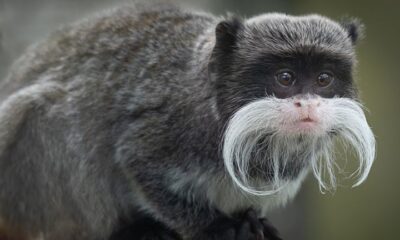

27 Animals That Look Like They Could Be A Cartoon…
-
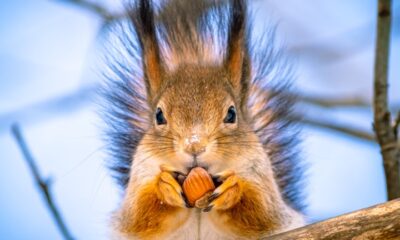

We Promise This Animal Is Not As Annoying As You…
-
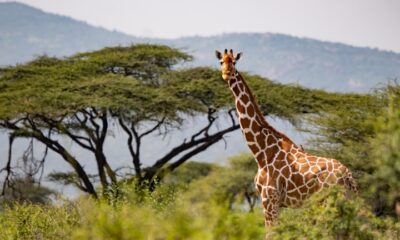

Why Giraffes Are Actually So Scary
-
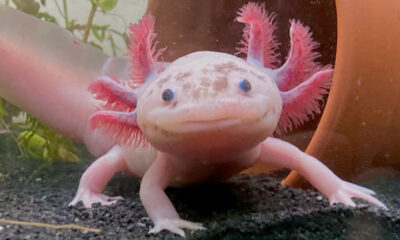

30 Rarest Animal From Around The World
-


25 Reasons Why Huskies Make The Best Pets
-


Dogs at polling stations in Oldham, England, Absolute chaos here…
-
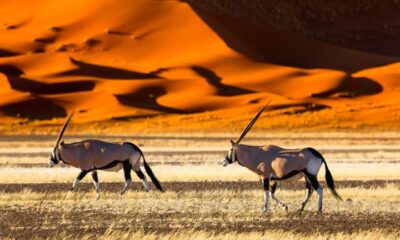

24 Wildlife Conservation Sanctuaries Around The World
-
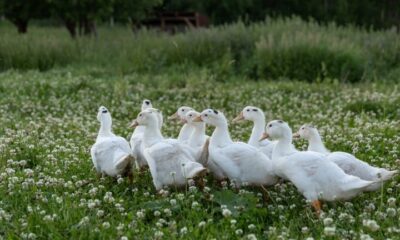

Ducks Are Cooler Then You Think, Here’s Why
